
The Wisconsin Plan (also known as the Wales Plan and Canada Plan; originally Continuous Mediation Without Armistice) [1] was a proposal created by Julia Grace Wales to end the First World War. [2]

The Wisconsin Plan (also known as the Wales Plan and Canada Plan; originally Continuous Mediation Without Armistice) [1] was a proposal created by Julia Grace Wales to end the First World War. [2]
Julia Grace Wales was a Canadian-born Wisconsin university professor who was deeply troubled by reports of the war. She spent the autumn of 1914 considering possible methods for finding a peace solution. [2] [3] The United States was neutral at the time, and President Woodrow Wilson asked his compatriots to remain "impartial in thought". In December, Wales prepared a plan. She proposed that the United States organize a conference (a "world thinking organ") composed of delegations from neutral countries, who would mediate between the warring powers and disseminate peace proposals, with the goal of eventually reaching a fair settlement. The conference was to last for as long as the war continued. [2] [3] [4] Two main principles were meant to guide the mediators: no nation could be humiliated by the peace, and there could be no compromises that could later lead to another war. [3] The plan was carefully revised many times. [2]
The newly formed Wisconsin Peace Party and the National Peace Party, led by Jane Addams, both endorsed Wales' plan. The former party started printing and distributing the Wisconsin Plan as pamphlets in early 1915. The National Peace Party sent a delegation to present the idea to President Wilson and to the United States Congress, to which it was recommended by Wisconsin's Senator Robert M. La Follette, Sr.. [3] Rosika Schwimmer, who had independently devised a similar idea, proposed the plan at the International Congress of Women, and Wales seconded it. [2] The ICW received several proposals but unanimously agreed that the Wisconsin Plan was the most plausible method. Thousands of pamphlets, printed in four languages, were distributed in Europe and North America. [3]
Wilson appeared to be interested in the proposal, but the sinking of the RMS Lusitania by the Germans in March 1915 and the resulting deaths of 1,198 people (128 of whom were U.S. citizens) brought about an uncertainty about the neutrality policy, leading government officials to back away from mediation. The industrialist Henry Ford started advocating the Wisconsin Plan and accompanied Wales to Europe, but the movement began declining. The United States entered the war in April 1917, rendering the plan a dead letter. [3]

Thomas Woodrow Wilson was an American politician and academic who served as the 28th president of the United States from 1913 to 1921. A member of the Democratic Party, Wilson served as the president of Princeton University and as the governor of New Jersey before winning the 1912 presidential election. As President, Wilson changed the nation's economic policies and led the United States into World War I in 1917. He was the leading architect of the League of Nations, and his progressive stance on foreign policy came to be known as Wilsonianism.

The Paris Peace Conference was the formal meeting in 1919 and 1920 of the victorious Allies after the end of World War I to set the peace terms for the defeated Central Powers. Dominated by the leaders of Britain, France, the United States and Italy, it resulted in five treaties that rearranged the map of Europe and parts of Asia, Africa and the Pacific Islands and imposed financial penalties. Germany and the other losing nations had no voice which gave rise to political resentments that lasted for decades.

The Hague Conventions of 1899 and 1907 are a series of international treaties and declarations negotiated at two international peace conferences at The Hague in the Netherlands. Along with the Geneva Conventions, the Hague Conventions were among the first formal statements of the laws of war and war crimes in the body of secular international law. A third conference was planned for 1914 and later rescheduled for 1915, but it did not take place because of the start of World War I.
The Lausanne Conference of 1949 was convened by the United Nations Conciliation Commission for Palestine (UNCCP) from 27 April to 12 September 1949 in Lausanne, Switzerland. Representatives of Israel, the Arab states Egypt, Jordan, Lebanon and Syria, and the Arab Higher Committee and a number of refugee delegations were in attendance to resolve disputes arising from the 1948 Arab–Israeli War, mainly about refugees and territories in connection with Resolution 194 and Resolution 181.

Ludwig "Louis" Paul Lochner was an American political activist, journalist, and author. During World War I, Lochner was a leading figure in the American and the international anti-war movement. Later, he served for many years as head of the Berlin bureau of Associated Press and was best remembered for his work there as a foreign correspondent. Lochner was awarded the 1939 Pulitzer Prize for correspondence for his wartime reporting from Nazi Germany. In December 1941, Lochner was interned by the Nazis but was later released in a prisoner exchange.

Woodrow Wilson's tenure as the 28th president of the United States, lasted from March 4, 1913, until March 4, 1921. Wilson, a Democrat who previously served as the governor of New Jersey, became president after winning the 1912 election, gaining a large majority in the electoral vote and a 42% plurality of the popular vote in a four-candidate field. Wilson was re-elected in 1916, defeating Republican candidate Charles Evans Hughes by a narrow margin. Despite his New Jersey base, most people thought of him as a Southerner, making him the first Southerner in the White House since Zachary Taylor in 1850, and just the second Democrat to be elected president since 1860.

Opposition to World War I included socialist, anarchist, syndicalist, and Marxist groups on the left, as well as Christian pacifists, Canadian and Irish nationalists, women's groups, intellectuals, and rural folk.

The relations between the Russian Empire and the United States of America (1776–1917) predate the Soviet Union–United States relations (1922–1991) and the modern Russia–United States relations (1991–present). Relations between the two countries were established immediately after the US declared its independence.
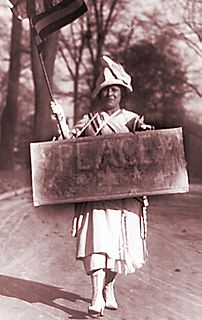
The Woman's Peace Party (WPP) was an American pacifist and feminist organization formally established in January 1915 in response to World War I. The organization is remembered as the first American peace organization to make use of direct action tactics such as public demonstration. The Woman's Peace Party became the American section of an international organization known as the International Committee of Women for Permanent Peace later in 1915, a group which later changed its name to the Women's International League for Peace and Freedom.
The International Congress of Women was created so that groups of existing women's suffrage movements could come together with other women's groups around the world. It served as a way for women organizations across the nation to establish formal means of communication and to provide more opportunities for women to ask the big questions relating to feminism at the time. The congress has been utilized by a number of feminist and pacifist events since 1878. A few groups that participated in the early conferences were The International Council of Women (ICW), The International Alliance of Women (IAW) and The Women's International League for Peace and Freedom (WILPF).

The American entry into World War I came in April 1917, more than two and a half years after the war began in Europe.
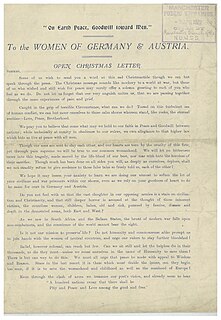
The Open Christmas Letter was a public message for peace addressed "To the Women of Germany and Austria", signed by a group of 101 British suffragists at the end of 1914 as the first Christmas of the First World War approached. The Open Christmas Letter was written in acknowledgment of the mounting horror of modern war and as a direct response to letters written to American feminist Carrie Chapman Catt, the president of the International Woman Suffrage Alliance (IWSA), by a small group of German women's rights activists. Published in January 1915 in Jus Suffragii, the journal of the IWSA, the Open Christmas Letter was answered two months later by a group of 155 prominent German and Austrian women who were pacifists. The exchange of letters between women of nations at war helped promote the aims of peace, and helped prevent the fracturing of the unity which lay in the common goal they shared, suffrage for women.

The United States declared war on Germany on April 6, 1917, nearly three years after World War I started. A ceasefire and Armistice was declared on November 11, 1918. Before entering the war, the U.S. had remained neutral, though it had been an important supplier to the United Kingdom, France, and the other powers of the Allies of World War I.
The Racial Equality Proposal was an amendment to the Treaty of Versailles that was considered at the 1919 Paris Peace Conference. Proposed by Japan, it was never intended to have any universal implications, but one was attached to it anyway, which caused its controversy. Japanese Foreign Minister Uchida Kōsai stated in June 1919 that the proposal was intended not to demand the racial equality of all coloured peoples but only that of members of the League of Nations.
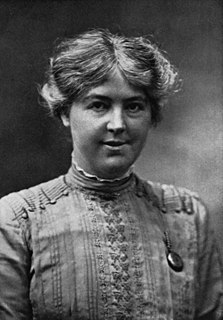
Jessie Chrystal Macmillan was a suffragist, peace activist, barrister, feminist and the first female science graduate from the University of Edinburgh as well as that institution's first female honours graduate in mathematics. She was an activist for women's right to vote, and for other women's causes. She was the second woman to plead a case before the House of Lords, and was one of the founders of the Women's International League for Peace and Freedom.
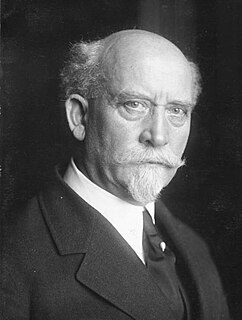
The Scheidemann cabinet was the first democratically elected Reichsregierung of the German Reich. It took office on 13 February 1919. Although the Weimar Constitution was not in force yet, it is generally counted as the first government of the Weimar Republic. It was based on the Weimar Coalition of centre-left parties. Ministerpräsident Philipp Scheidemann resigned in protest against the Treaty of Versailles on 20 June 1919. His cabinet was followed by the government of Gustav Bauer.
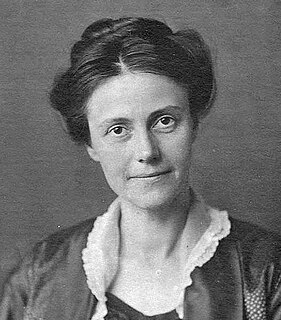
Julia Grace Wales was a Canadian academic known for authoring the Wisconsin Plan, a proposal to set up a conference of intellectuals from neutral nations who would work to find a solution for the First World War.
The Indian barrier state or buffer state was a British proposal to establish a Native American state in the portion of the Great Lakes region of North America west of the Appalachian Mountains, and bounded by the Ohio and Mississippi rivers and the Great Lakes. The concept of establishing such a state, first conceived in the late 1750s, was part of a long-term plan to reconcile the Indian tribes to British rule and diminish hostilities between the tribes and the British Army following its victory in the French and Indian War. After the region was assigned to the United States in the 1783 treaty ending the American Revolutionary War, British officials pursued efforts to organize the various tribes within it into a sort of Confederation that would form the basis of an Indian state, independent of the United States and under their tutelage, as a way to protect their fur trade ventures in the region and to block American expansion westward.
The diplomatic history of World War I covers the non-military interactions among the major players during World War I. For the domestic histories of participants see home front during World War I. For a longer-term perspective see international relations of the Great Powers (1814–1919) and causes of World War I. For the following (post-war) era see international relations (1919–1939). The major "Allies" grouping included Great Britain and its empire, France, Russia, Italy and the United States. Opposing the Allies, the major Central Powers included Germany, Austria-Hungary, the Ottoman Empire (Turkey) and Bulgaria. Other countries also joined the Allies. For a detailed chronology see timeline of World War I.
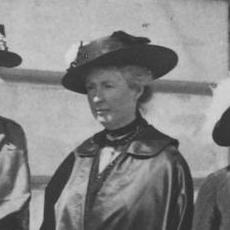
Cornelia Ramondt-Hirschmann was a Dutch teacher, feminist, pacifist and theosophist active in the first half of the twentieth century. She was one of the women who participated in the push by pacifist feminists during World War I for world leaders to develop a mediating body to work for peace. The culmination of their efforts would be the achievement of the League of Nations when the war ended. Between 1935 and 1937, she served as one of the three international co-chairs of the Women's International League for Peace and Freedom (WILPF).